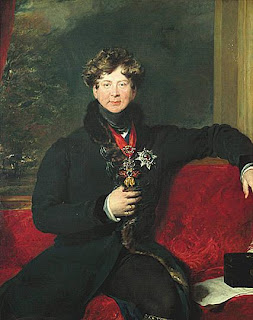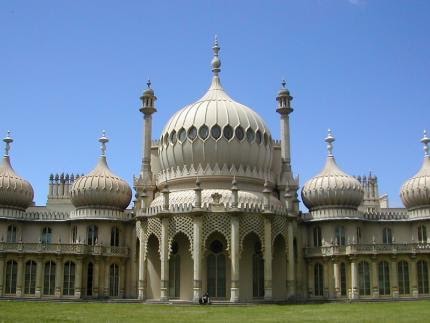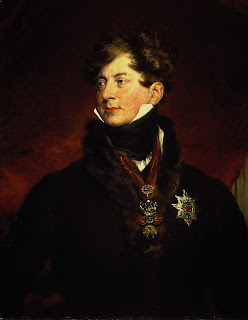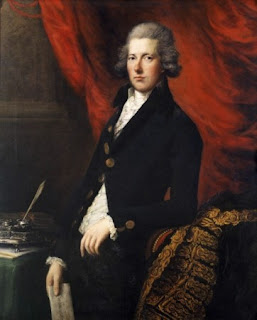On 8 April 1795 at the Chapel Royal, St James’s Palace took place the marriage of The Prince of Wales to his cousin, Princess Caroline of Brunswick. No love match, the Prince was marrying Caroline in exchange for Parliament’s agreement to pay off his astronomical debts. In fact, the Prince had previously, and quasi-secretly, married Maria Fitzherbert on 15 December 1785, in the drawing room of her house in Park Street, London. Whilst the marriage wasn’t announced with a public hue and cry, it was still public knowledge.
From Mrs. Fitzherbert and George IV by William Henry Wilkins (1905):
The denials of the Prince’s friends counted for little, for people remembered how emphatically the rumour of the marriage between the Duke of Gloucester and Lady Waldegrave had been denied, and yet it proved to be true after all. The accounts of Mrs. Fitzherbert’s marriage were categorical, and the fact that she was supported and visited by many ladies of the first fashion lent the weight of corroborative evidence. With the public the opinion gained ground that a marriage had taken place. The Marquis of Lothian wrote to the Duke of Rutland, March 4, 1786, “You ask me my opinion respecting the Prince’s marriage. I think it has all the appearance of being true. I believe, when he has been spoken to about it, he has been violent, but I cannot find out that he has denied it peremptorily. He has said to one of the most intimate in his family [household], when asked on the subject, that he might answer, if asked the question, in the negative. But surely a report of this sort, were it not true, should be publicly contradicted, and I am amazed that some member of Parliament has not mentioned it in the House. Most people believe it, and I confess I am one of the number. Though I dined alone with him, and you know the general topic of his conversation about women, he never mentioned her to me amongst others. I am very sorry for it, for it does him infinite mischief, particularly amongst the trading and lower sort of people, and if true must ruin him in every light.”
 |
| Maria Fitzherbert |
It may be supposed that the topic was not confined to private letters. The press, then far less restrained than now, continued to teem with scarcely veiled innuendoes and scandalous rumours. Some journals maintained that “some sort of marriage” had taken place, others stoutly denied it. Nor did the caricaturists, those inevitable satirists on the follies of the day, linger behind. Prints and cartoons on the subject of the marriage were published in great number and variety; they were exposed in the shop windows, and even sold in the streets, to the great delight of the vulgar. All, or nearly all, of them were wide of the facts, and many were exceedingly scurrilous. It was an age of coarseness, and the licence permitted to the caricaturists was great.
Rumour and innuendo aside, the marriage was illegal, as under the Royal Marriage Act, the Prince of Wales, being below the age of 25, could not marry without the Kng’s permission. He most especially could not marry a Roman Catholic. Now, there’s alot more to the story – much more than we have room for in this post – but suffice to say that George, Prince of Wales was fairly forced by his father, King George III, to settle down, to marry and to beget himself an heir. Unfortunately, George loathed Princess Caroline on sight, taking offence at her looks, her voice, her personality, her manner and, it seems fair to say, her very existence.
Nevertheless, the marriage ceremony which took place on April 8th, at which the Prince of Wales was attended by three unmarried groomsmen including: the 30-year-old friend the 5th Duke of Bedford and the 3rd Duke of Roxburghe, a 54-year-old favorite of George III. The Prince was also attended by his friend, the 17-year-old Coronet George “Beau” Brummell. And whilst he was not attended by her, also present was the Prince’s current mistress, Frances, Lady Jersey.
 |
| Caroline, 1804 by Sir Thomas Lawrence |
The Prince of Wales arrived for the wedding very drunk and was obviously reluctant to proceed with the ceremony, hesitated frequently in his responses and cried openly in front of the company. In fact, at one point in the ceremony, his father actually had to urge him to say his lines and get the business concluded. The Prince looked not at all at his bride but frequently at his mistress, the 42-year-old Lady Jersey, the wife of the 60-year-old fourth Earl of Jersey, George Bussy Villiers.
After the ceremony, the King and Queen held a drawing-room for the couple in the Queen’s apartment in St. James Palace. Caroline seemed pleased and chatty. The Prince was silent and morose until near the end of the evening when he recovered his composure enough to become “very civil and gracious.” This upturn did not last long, as soon the Prince of Wales became so drunk that he spent his wedding night passed out on the floor in front of the bedroom fireplace. He finally awakened early in the morning and performed his conjugal duties, which resulted in a daughter, Princess Charlotte, nine months later when, coincidentally, the couple split up, never again to live as man and wife.
































